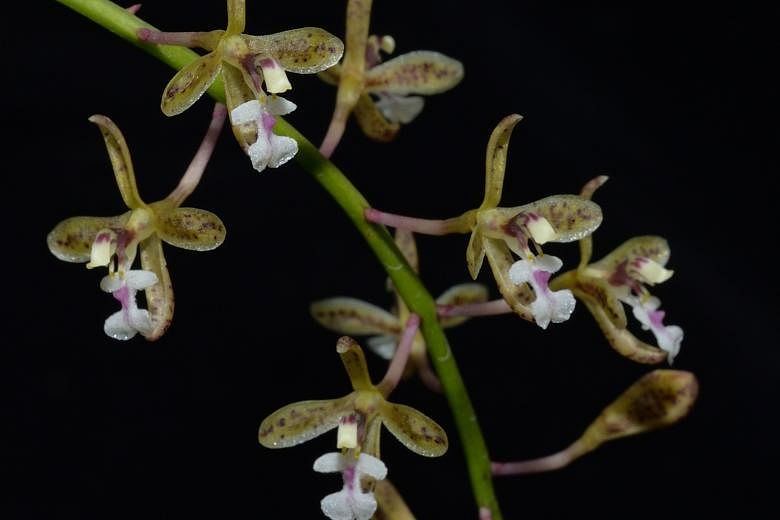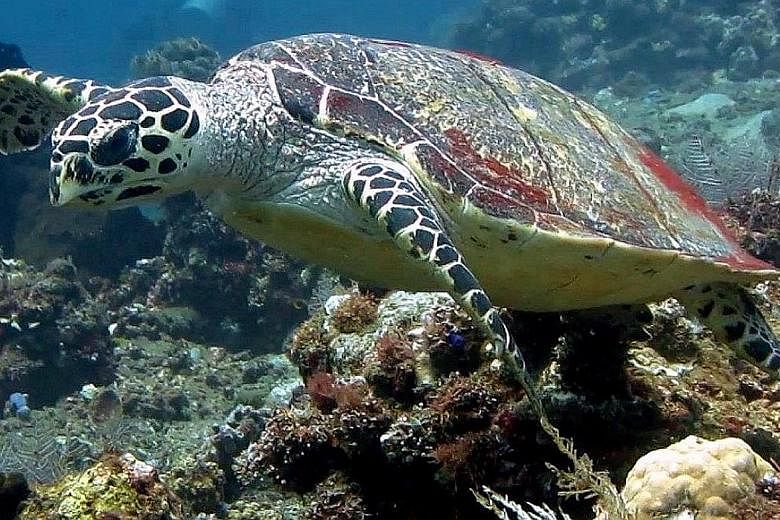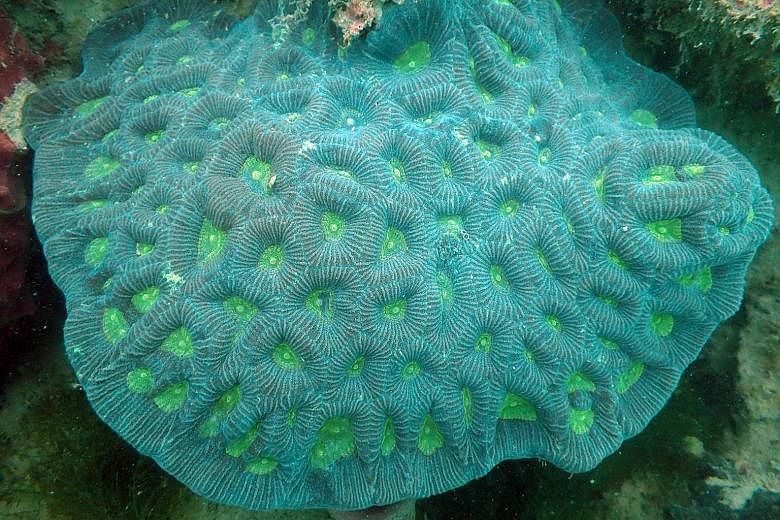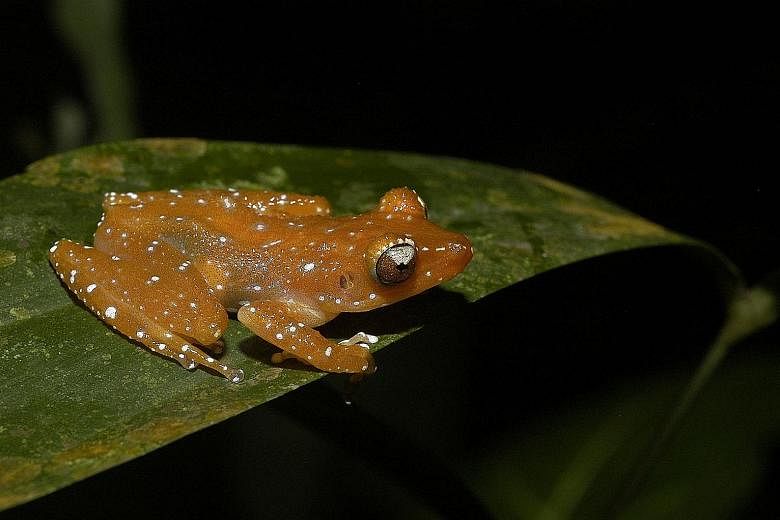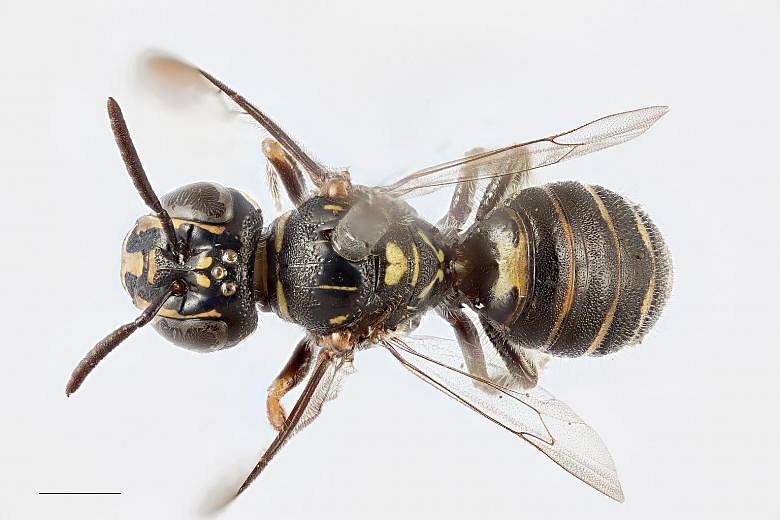Despite decades of biodiversity surveys - all the way back to the great naturalist Alfred Russel Wallace in the 19th century - new species are still being found. More than 500 animal and plant species were discovered or rediscovered in Singapore over the last five years, the National Parks Board (NParks) revealed yesterday at its annual Festival of Biodiversity.
One possible new species, a solitary carpenter bee, has been given the name "sayang", meaning "love" in Malay, on account of a heart-shaped marking on its back. Ceratina sayang, which lives alone in holes bored in wood, was found in a bloom of giant orchids in Dairy Farm Nature Park in 2014.
At Bukit Timah Nature Reserve last year, an NParks staff stumbled upon an orchid, Acriopsis ridleyi, that had not been seen since 1889. Not taking any chances, the agency took it for propagation at the National Orchid Garden nursery.
One of the latest discoveries was made during a survey at Sisters' Islands Marine Park last week, when National University of Singapore Assistant Professor Huang Danwei discovered the coral Favites vasta in Singapore for the first time.
He was guiding members of the public taking part in one of the nationwide surveys, or BioBlitzes, by NParks.
Other discoveries include a tree that had been standing in the former Warren Golf & Country Club for years but was identified only in 2012 during the construction of NUS' University Town, and a secretive snake that leads a muddy existence in Nee Soon Swamp Forest. Both are new records for Singapore.
NParks said some of these species may play crucial but hidden roles in maintaining Singapore's natural habitats, and has taken measures to enhance their populations or protect their habitats.
Lin Yangchen
Correction note: This story has been edited for clarity.
